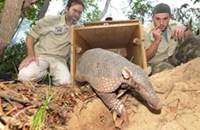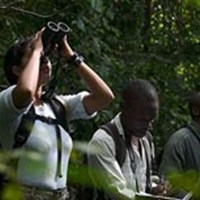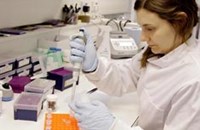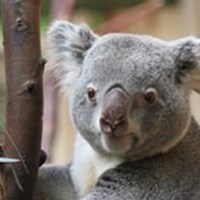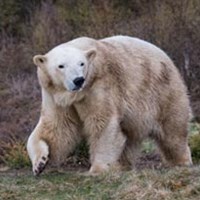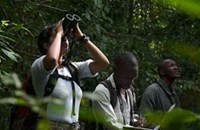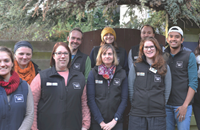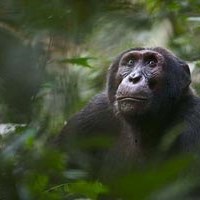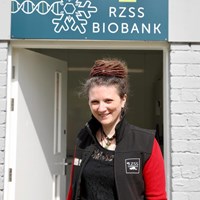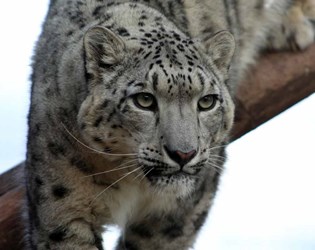Dr Gill Murray-Dickson
Biobank Research Fellow (RZSS/NMS)
Research interests
Gill has a background in research and the application of population genetic analysis to inform conservation management of rare and endangered species. She completed her PhD at the University of Aberdeen in 2011, examining population genetic structure of neutral and adaptive DNA markers. She has since used genetic and genomic tools to evaluate phylogeographic and population structure, hybrid status, population size, diet content, and environmental DNA viability; developing informative and transferable DNA-based assays for use with a wide range of species and to facilitate capacity building in collaborating countries.
She worked for five years as a research scientist, based within the Royal Zoological Society of Scotland’s (RZSS) WildGenes laboratory, collaborating closely with members of the European Association of Zoos and Aquaria (EAZA) community. Alongside government agencies, conservation charities, zoos and academic professionals, she has managed conservation genetic research for reticulated pythons, Scottish capercaillie, Malayan peacock pheasants, Ibis, Grey partridge, invertebrates, tigers, tortoise, and antelope species, among others.
Now based at the National Museums Collection Centre (National Museums Scotland) Gill is working as a Biobank Research Fellow with the BBSRC funded CryoArks initiative. She is coordinating biobanking activities at the NMCC and EAZA biobank UK hub in RZSS Edinburgh zoo and is responsible for establishing biobank facilities at the two sites, curating samples submitted to the hubs, managing sample metadata, providing end-user support, education and awareness within the zoo community, and promoting the CryoArks and EAZA biobank initiatives
Background
PhD (University of Aberdeen, UK) Biological Sciences
Undergraduate (University of Aberdeen, UK) Zoology
Undergraduate (Liverpool John Moores University, UK) Pharmacy
Publications
Murray-Dickson G, Ghazali M, Ogden R, Auliya M. 2017. Phylogeography of the reticulated python (Malayopython reticulatus ssp.): conservation implications for the worlds’ most traded snake species. PlosONE, https://doi.org/10.1371/journal.pone.0182049
Fletcher, K., Baines, D. & Murray-Dickson, G. 2017. Can genetic techniques help estimate capercaillie (Tetrao urogallus) population size and survival rates - a pilot study to develop survey methods. Scottish Natural Heritage Commissioned Report No. 910
Murray-Dickson G, Ogden R (2014) Development of breed specific assays for beef and pork authentication. Defra Commissioned Report, FA0125.
Murray-Dickson G, Ogden R (2014) Geographic traceability tools for commercial fish and fish products. Defra Commissioned Report, FA0125.
Murray-Dickson G, Berrow S, Reid R J, Thompson P M, Piertney S B. (2011) Assessment of population structure using molecular analyses of tissue from strandings. In Thompson P M, Cheney B, Ingram S, Stevick P, Wilson B, Hammond P S (Eds). Distribution, abundance and population structure of bottlenose dolphins in Scottish waters. Scottish Government and Scottish Natural Heritage funded report. Scottish Natural Heritage Commissioned Report No. 354.
Cronin M T D, Dearden J C, Moss G P, Murray-Dickson G (1999) Investigation of the mechanism of flux across human skin in vitro by quantitative structure-permeability relationships. European Journal of Pharmaceutical Sciences, 7, 325-330.
Duffy J C, Cronin M T D, Dearden J C, Moss G P, Murray-Dickson G (1999) Prediction of blood-brain barrier partitioning using QSAR analysis. Journal of Pharmacy and Pharmacology, 51 (suppl.), 260y
Support
THE ROYAL ZOOLOGICAL SOCIETY OF SCOTLAND
Sign into our Members Portal hereLatest News
-
Blog

19/04/2024
An update from the Budongo Forest
The Budongo Conservation Field Station (BCFS) in Uganda is one of our wildlife conservation charity’s longest partnerships.
-
Blog

29/03/2024
Bug’s the word
For many people the sight, or perhaps even just the thought, of bugs can be enough to make you feel a little uneasy. Invertebrates are an important part of our ecosystems but helping everyone feel the love for them can be a bit tricky.

